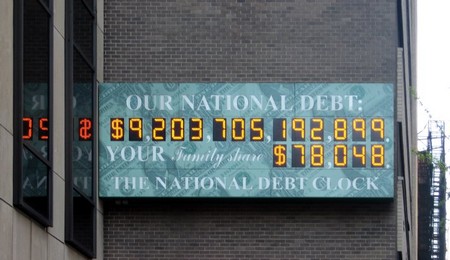A country’s national debt is the money owed by the government to third parties. When a country runs for consecutive years at a deficit (which means it is spending more money than it is earning), the debt grows and has to be financed by loans, as it is in the case for a corporation or an individual. The U.S. national debt has fluctuated very significantly throughout history. It focuses attention because it is an important indicator of how the country is doing.
A Costly Independence
Quite ironically, the United States was in debt even before it became a country. By gaining its independence through war, America had already begun financing military actions – thus incurring debt that was effective as soon as the nation was born. Early U.S. governments therefore endeavored to reduce or even eradicate the debt, which proved impossible; that is, debt is a natural part of running a business or a country and is necessary to fund investments.

The Louisiana Purchase is a perfect example. Such allowed the U.S. to achieve unity as a country and acquire vast expanses of precious land that now contribute to the grandeur of the country. And yet it required tremendous amounts of capital that was attainable only through borrowing.
Additionally, a country inevitably ends up engaging in very costly and non revenue-generating activities. The U.S. Civil War was one of those unforeseen events that ended up draining the government’s coffers while feeding the mounting national debt. The symbolic mark of $1 billion was reached due in large part to said internal conflict.
Twentieth Century – Wealth and Wars
Following the Industrial Revolution, the U.S. had become an economically very powerful country and entered the 20th century in a very comfortable position financially and with a reasonable level of indebtedness. But the U.S.’s involvement in World War I required enormous amounts to be invested in the Army, which caused the debt to skyrocket between 1914 and 1918.
Due to its strong economy, the United States has been able to reduce its national debt in between wars. That said, it always dramatically increased again every time a new conflict broke out. World War II and the Vietnam War in particular hit the national debt pretty hard.
In more recent times, the U.S.’s debt level has been harder to control. During the 1980s the infamous trillion mark was reached and largely surpassed. Although the 1990s saw a much more stable evolution of the national debt, growth started again in the early 2000s. It is estimated that it will continue at an unfortunately steady pace in the coming years, but its reduction remains a major focus for the current administration.

Funding the National Debt
The United States has been funding its national debt through the issuance of a series of debt instruments. Those are diverse but essentially consist of bonds issued by the government with various maturity dates and interest rates. They are issued to American and foreign populations and corporations. The U.K., Japan and China, for example, hold significant amounts of U.S. bonds. The American government is used to selling bonds and bills to the public, sometimes appealing to its residents’ patriotism in times of war and offering low-yield but yet very safe investment options.


















